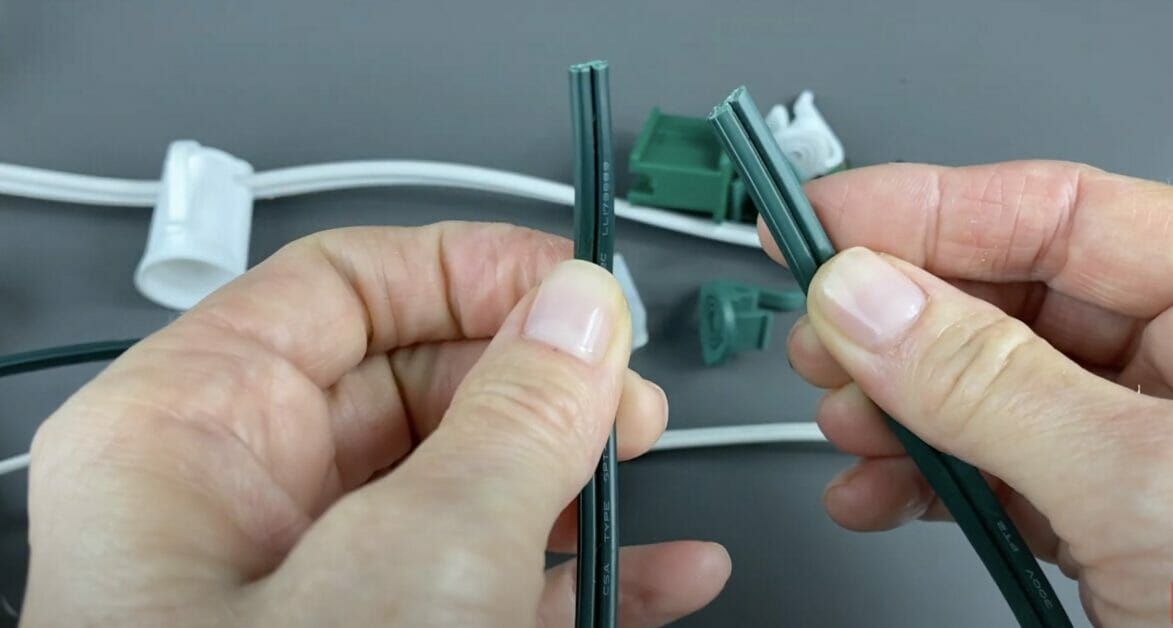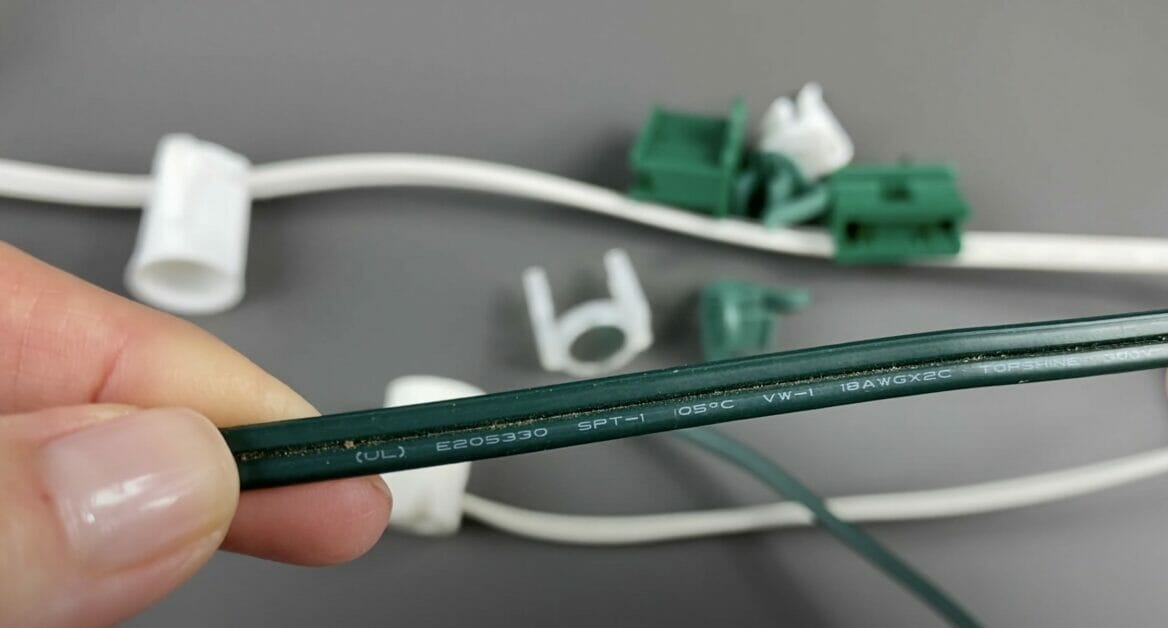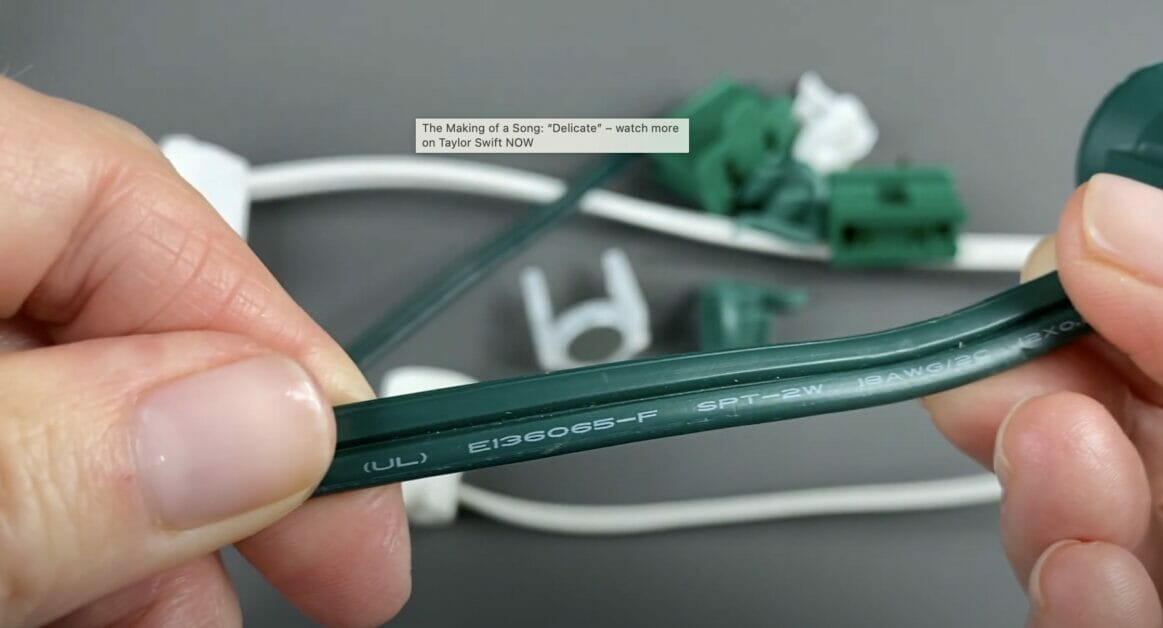What is the Difference Between SPT1 and SPT2 Wire? (Gauge, Usage, Safety)
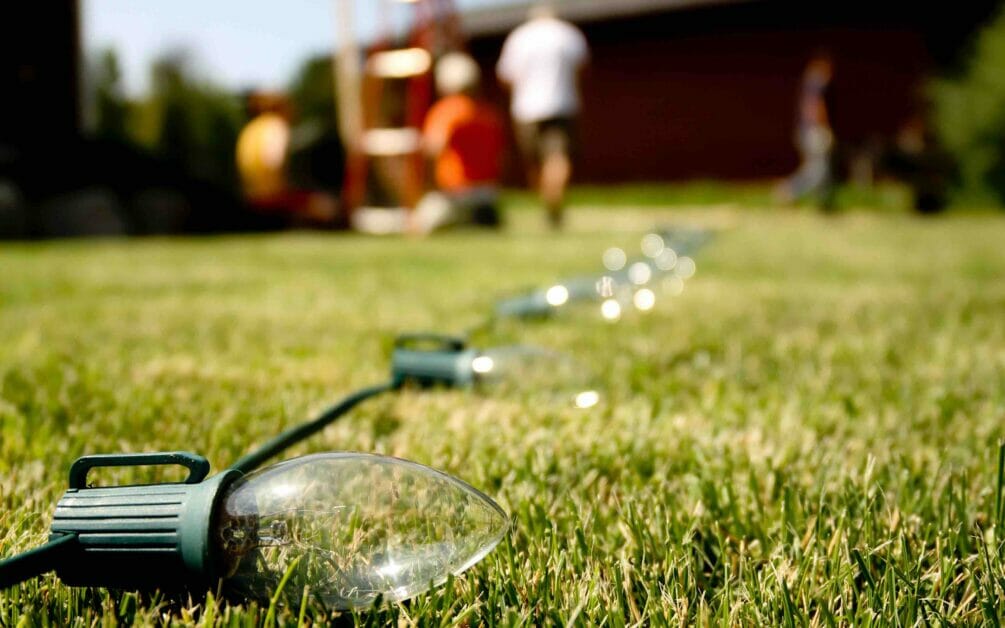
Wondering about the difference between SPT-1 and SPT-2 wires? Don’t worry, I can help!
The first thing to get straight is that SPT stands for Stranded Parallel Thermoplastic. It’s a type of wire often used for lamp cords and small appliances. You’ve probably seen it around, even if you didn’t know what to call it!
Quick Summary: SPT1 and SPT2 wires are parallel-cord electrical wires commonly used for lamps and small appliances. The primary difference between them is their insulation thickness, with SPT2 being slightly thicker than SPT1. As a result, SPT2 wire can handle a bit more electrical current and is somewhat more durable, whereas SPT1 is a bit more flexible due to its thinner insulation.
Both types are designed for low-voltage applications and are often chosen based on the specific requirements of a project.
I will go into more detail below.
Understanding the Basics: SPT1 and SPT2 Wires
First off, what is an SPT wire? Well, it stands for Stranded Parallel Thermoplastic wire. These are commonly used in small appliances or for electrical cords. Now that we’ve got that out of the way let’s break down the differences between SPT1 and SPT2.
Size matters here – the main difference between these two types of wires is their thickness. In technical terms, we call this “gauge size.”
| Wire Type | Gauge Size |
|---|---|
| SPT1 | 18 AWG |
| SPT2 | 16 AWG |
As you can see from my table, an SPT1 wire has a gauge size of 18 AWG (American Wire Gauge). This means it’s thinner than its counterpart.
On the other hand (or should I say on the other end of this cord?), our SPT2 wire boasts a thicker profile with a gauge size of 16 AWG.
Now you might be thinking, why does this matter? Well, thicker wires like SPT2 can handle more electrical current than thinner ones like SPT1.
If you’re dealing with high power requirements or long wiring runs where voltage drop might become an issue, then SPT2 would be your best bet.
But don’t discount our thinner friend just yet! The smaller size and flexibility of an SPT1 wire make it easier to work with in certain scenarios – think larger Christmas light displays or intricate lamp designs where tight bends are needed.
Here’s a quick rundown:
- Use SPT1 for lower power requirements and tighter spaces.
- Choose STP2 when dealing with higher power demands or long wiring runs.
I hope that clears up some confusion about these two types of wires. Next, in section two…we’ll delve deeper into their specific uses!
A Closer Look at SPT1 Wire
When we’re talking about SPT1 specifically, it means this is the lighter version. It has an insulation thickness of approximately 0.03 inches. This makes it perfect for more delicate applications where you don’t need as much power.
But here’s something interesting: despite its thinness, SPT1 wire can handle up to 7 Amps at a maximum of 125 volts. That’s pretty impressive if you ask me!
| Wire Type | Insulation Thickness | Amp Capacity |
|---|---|---|
| SPT1 | Approx 0.03 inches | Up to 7 Amps |
Here are some key points about SPT1 wire:
- Often used in smaller, low-voltage appliances
- Its thinner insulation allows for greater flexibility
- Its amp capacity may seem limited compared to other wires, but remember – it’s designed for specific uses where high power isn’t required.
Remember – your choice between SPT1 and other types of wire should depend on your specific needs! If you need something lightweight with enough power for lower voltage requirements, then SPT1 could be just what you’re looking for! We’ll look at SPT2 in the next section, so stay tuned to compare them side-by-side.
Diving Deeper: The Ins and Outs of SPT2 Wire
Let’s dive right into the world of SPT2 wire. Compared to its counterpart, SPT1, the SPT2 wire is notably thicker. This difference lies in the insulation – SPT2 has more of it! That’s like your favorite winter coat having an extra layer to keep you toasty warm.
The thickness of a wire might seem like a small detail, but trust me, in electrical terms—it’s a game changer. It allows for a higher ampacity, which is a fancy way of saying it can handle more electrical current without overheating. Imagine that!
Here’s how they stack up:
| SPT1 | SPT2 | |
|---|---|---|
| Thickness (mm) | 1-1.5 | 2-3 |
| Ampacity (Amps) | 7 | 10 |
Now, you might be thinking, why would I need this? If you have larger projects or longer runs where voltage drop can become an issue—SPT2 is your go-to guy. Plus, because it’s sturdier, it lasts longer outdoors than SPT1.
But don’t get carried away! While these benefits are fantastic for certain applications, not every project requires such heavy-duty stuff. Wouldn’t you wear that thick winter coat on a sunny beach day now?
And remember, folks—the key here isn’t necessarily “bigger is better” but understanding what fits your needs best! Whether that’s the lean and mean SPT1 or our thicker buddy here—SPT2—all depends on what your project calls for.
So there we have it—a quick peek at the ins and outs of SPT2 wire! Stay tuned as we explore even deeper wires-related topics in our next sections!
How Thickness Differentiates SPT1 from SPT2
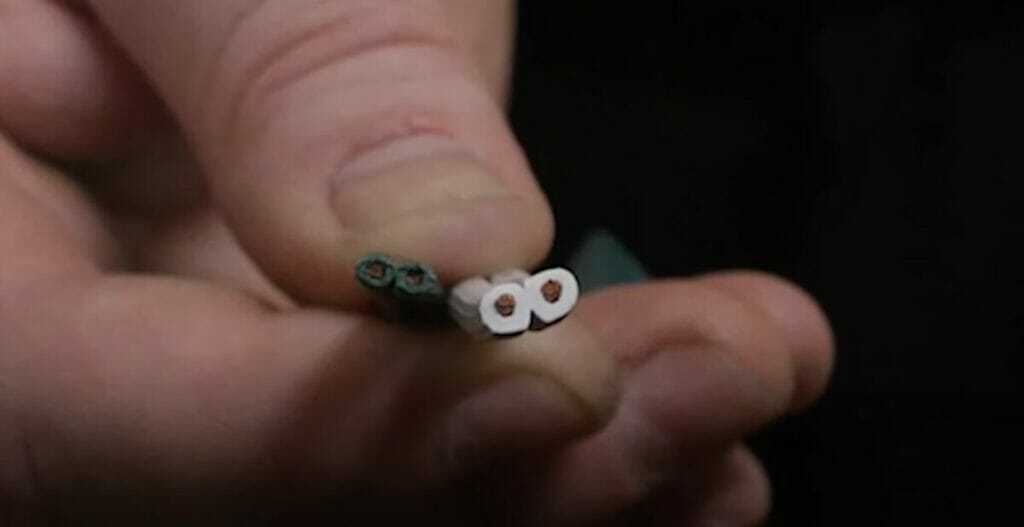
The key difference? It all boils down to one little thing – thickness. It may sound simple, but that extra millimeter or two can make a difference when dealing with electrical wires.
Hang on a second – don’t go thinking that thicker is always better! There’s more to it than just size. Sure, thicker wires like the SPT2 tend to carry more current and are less likely to overheat. But they’re also heavier, which might not be ideal if you use them for something like Christmas lights.
Now let’s look at some numbers:
| Wire Type | Thickness |
|---|---|
| SPT1 | 0.030 inches |
| SPT2 | 0.045 inches |
As you can see, there’s quite a gap between these two types of wire thicknesses!
On the flip side, our leaner option is the SPT1 wire. Being thinner means it’s lighter and easier to handle. It might not carry as much current as an SPT2 wire, but every tool has its place and purpose!
So how do you decide between these two? Well, think about your needs first:
- Are you going heavy-duty? Need something robust that’ll handle high currents without breaking a sweat? Then go for an SPT2.
- Or maybe you need something light and flexible? Something easy-peasy to hang up around your house for that cozy holiday vibe? In this case, an SPT1 might be just what Santa ordered!
Remember, folks – choosing between SPT1 and Spt2 isn’t about ‘better’ or ‘worse.’ It’s about understanding their differences and picking the best for your needs!
The Role of Ampacity in Choosing Between SPT1 and SPT2
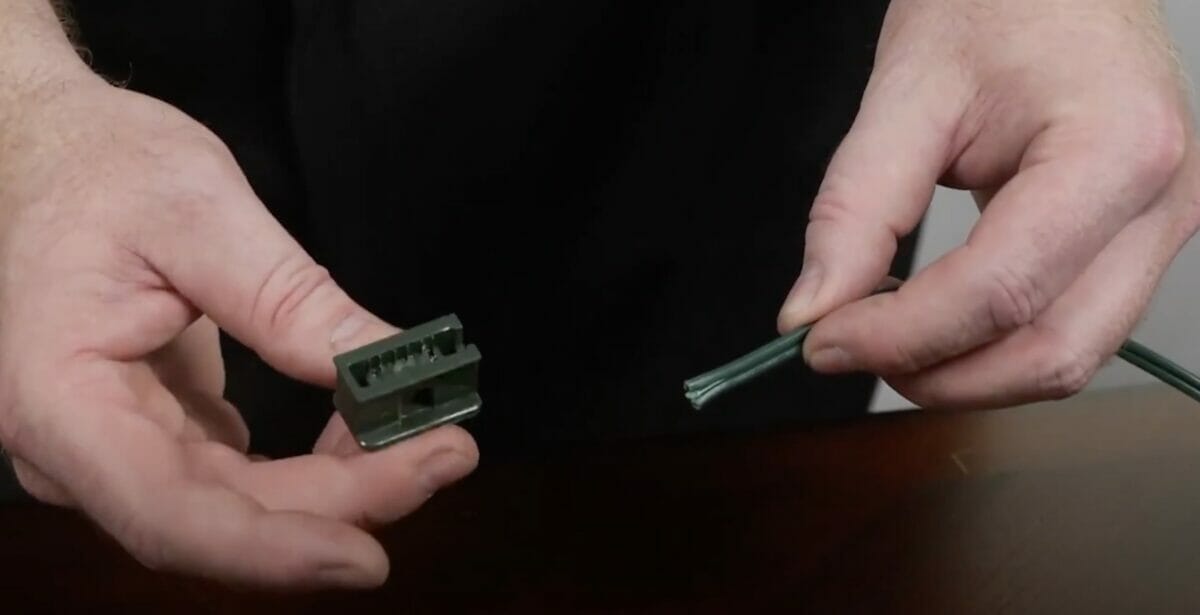
What’s the big deal about ampacity when choosing between SPT1 and SPT2 wires? I know it’s a mouthful but stick with me. It’s simpler than you think.
So, first off, let’s make some things clear. When we say ‘ampacity,’ we’re referring to how much current a wire can safely carry without overheating or causing any potential fire hazard. The higher the ampacity, the more electrical current a wire can handle – that’s crucial to remember.
Now, here’s where things get interesting. SPT1 and SPT2 might look similar, but there’s a significant difference in their ampacities because of their thickness differences.
SPT1 wire is thinner compared to its counterpart, SPT2. As a result, it has lower ampacity – often somewhere around 7 amps at room temperature (about 20 degrees Celsius). On the other hand, the beefier SPT2 can handle up to 10 amps under similar conditions.
Here’s how they stack up:
| Wire Type | Approximate Ampacity at 20°C |
|---|---|
| SPT1 | ~7A |
| SPT2 | ~10A |
So why does this matter? One type may be more suitable depending on your needs, like lighting fixtures or outdoor displays.
Let’s say you’ve got an outdoor Christmas light display that requires plenty of power. You’ll likely want the huskier SPT2 because it can handle more amperage without getting too hot under the collar.
On the flip side, though, opting for an efficient little guy like the SPT1 could save space and money if you only need low-key indoor lighting.
Remember, folks: knowledge is power! Understanding these nitty-gritty details – such as ampacity – ensures you’re making smart choices when picking between types of wires like our friends: good ol’ Spt1 and Spt2.
Weather Resistance: Another Factor to Consider
Let’s dive into another key difference between SPT-1 and SPT-2 wires: weather resistance. I don’t know about you, but I want something that’ll withstand the elements when choosing my electrical wiring.
So, what’s the lowdown on these two types of wire? SPT-1 wires aren’t as thick as their SPT-2 counterparts. This means they’re not quite as sturdy in harsh weather conditions. We’re talking wind, rain, snow – you name it! On the other hand, SPT-2 wires have a thicker insulation layer, making them more resistant to rough weather.
| Wire Type | Insulation Thickness | Weather Resistance |
|---|---|---|
| SPT-1 | Thinner | Not High |
| SPT-2 | Thicker | High |
But wait! Before you rush off to buy all the SPT-2 wire you can find – hold your horses! It’s important to remember that while SPT-2 is more durable overall, it comes with a higher price tag. So, if we’re talking about outdoor Christmas lights or temporary setups where durability isn’t a top priority, saving some dough with SPT-1 might be your best bet.
However:
- If you live in an area prone to severe weather,
- Or if your wiring setup is going to be a permanent fixture,
You might want to consider forking out for that extra protection offered by SPT-2. After all, better safe than sorry!
Practical Applications: Where to Use Each Type of Wire?

Now that we’ve tackled the technical differences between SPT1 and SPT2 wires, let’s dive into where you’d use each type.
First, the SPT1 wire is lighter and more flexible than its counterpart. It’s perfect for indoor use or light outdoor applications. So think about your Christmas tree lights or a simple backyard lighting setup. These wires are my go-to for indoor festivals, parties, or any event requiring quick setup and takedown.
On the other hand, if you’re dealing with heftier outdoor needs, I’d recommend reaching for SPT2 wire. It’s thicker and sturdier, making it resistant to harsh weather conditions – whether snowing in winter or sizzling in summer. Many folks might use this for permanent outdoor fixtures like landscape lighting or patio illumination.
So here’s a quick rundown:
| SPT1 | SPT2 | |
|---|---|---|
| Indoor Events | Yes | No |
| Light Outdoor Use | Yes | No |
| Heavy Outdoor Use | No | Yes |
Surely, there’s some overlap in their usage, but generally speaking:
- If flexibility and ease of installation are your primary concerns – say hello to SPT1.
- Need something tougher for long-term outside fixtures? That’s when you’ll want the heavyweight champion – SPT2 on your side.
Remember, though, every project is unique! While this guide should give you a good starting point, always consider what will work best given your circumstances. Happy wiring!
Safety Guidelines When Handling SPT Wires
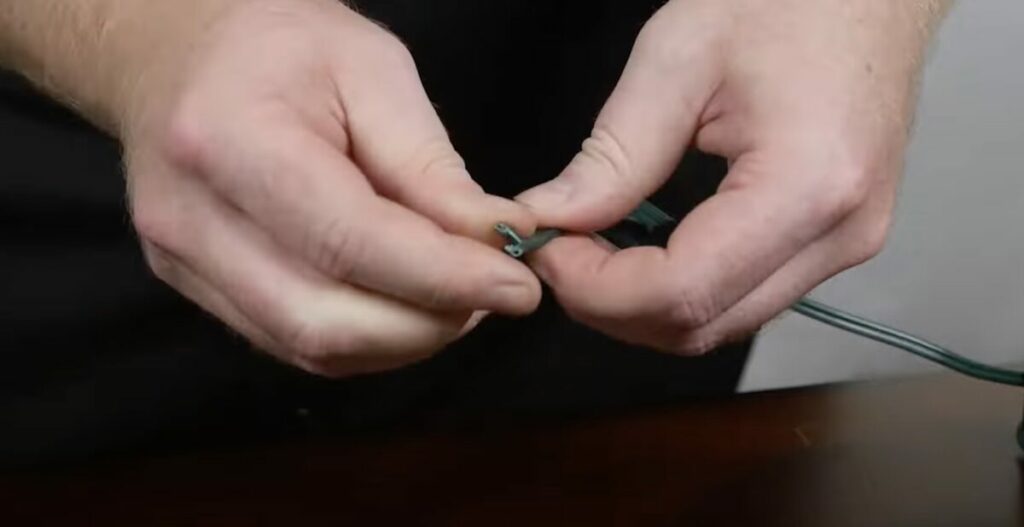
SPT wires must be handled carefully with the SPT-1 or SPT-2 variety. They might seem harmless, but mishandling can lead to serious consequences.
First, always turn off and unplug any electrical devices before working with these wires. It’s easy to overlook but crucial for avoiding electric shocks.
Now, let’s get into the nitty-gritty of handling these wires properly:
- Always wear protective gear like gloves and safety glasses. You don’t want any accidental scrapes or eye injuries!
- Ensure your work area is well-lit so you can see what you’re doing.
- Don’t pull on the wire too hard. This could damage both the wire and whatever it’s connected to.
- Keep these wires away from heat sources, which can melt or become brittle.
It’s also worth noting that there are differences between SPT-1 and SPT-2 wires that affect how they should be used:
| SPT-1 Wires | SPT-2 Wires | |
|---|---|---|
| Thickness | Thinner insulation (~0.03 inches) | Thicker insulation (~0.045 inches) |
| Amp Capacity | Suitable for lower amp applications (up to 7 amps) | Can handle higher amp applications (up to 10 amps) |
Because of their thinner insulation, SPT-1 wires tend to be more vulnerable than their SPT-2 counterparts regarding potential damages – so treat them gently!
Remember, folks, safety should always come first. As long as you follow these guidelines and respect the unique characteristics of each type of wire, you’ll save yourself a lot of potential trouble down the road.
References
Organizations:
- Underwriters Laboratories (UL). https://www.ul.com/solutions
- National Electrical Manufacturers Association (NEMA). https://www.nema.org/
Books:
- “Wiring Simplified” by H.P. Richter, W. Schwan, and F.P. Hartwell. https://www.amazon.com/Wiring-Simplified-Based-National-Electrical/dp/096032948X
- “The Complete Guide to Wiring” by Black & Decker. https://www.amazon.com/Black-Decker-Complete-Photo-Wiring/dp/0760371512
Video References:
Shellie at Christmas Light Source
The Christmas Light Emporium

